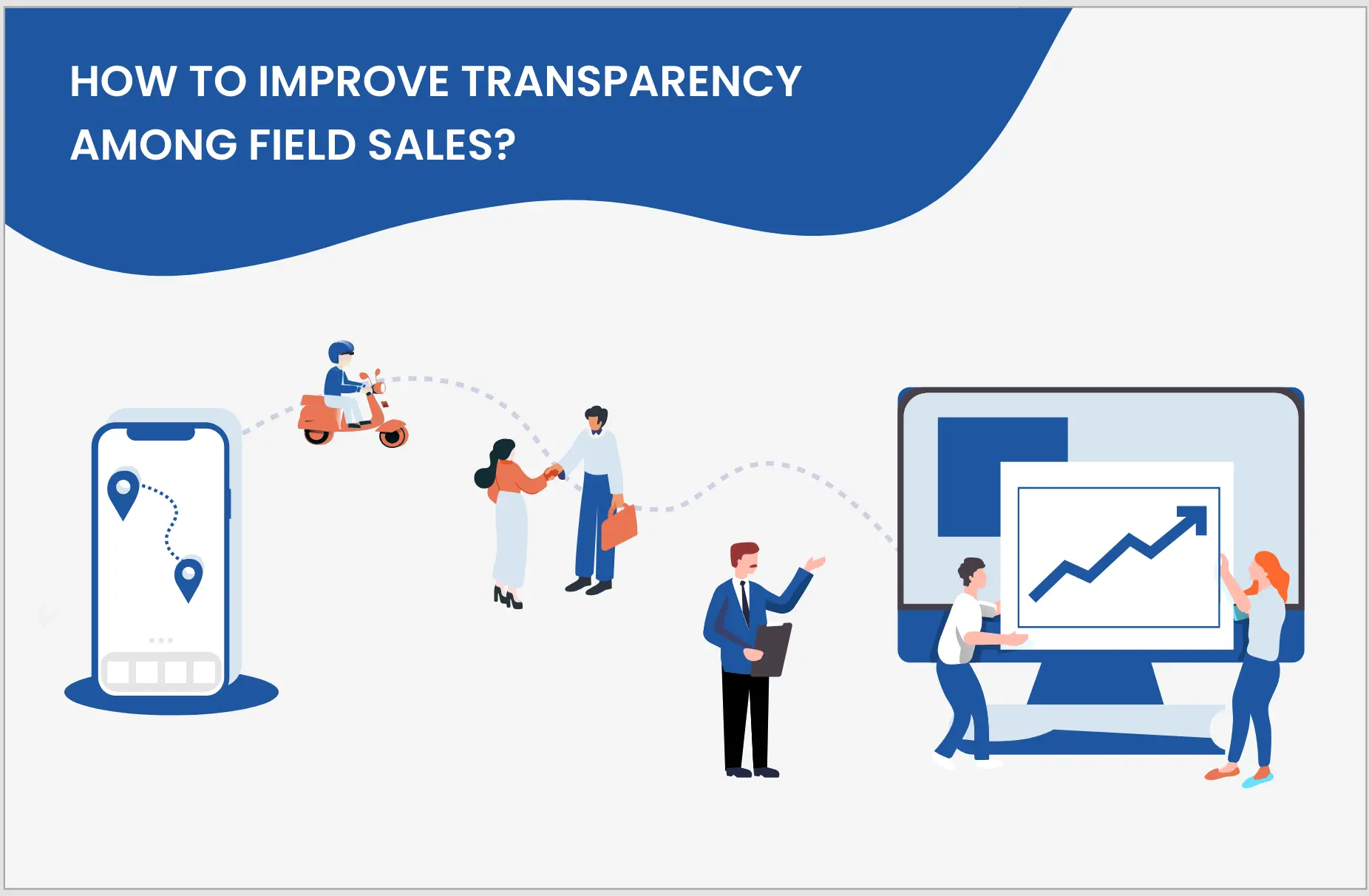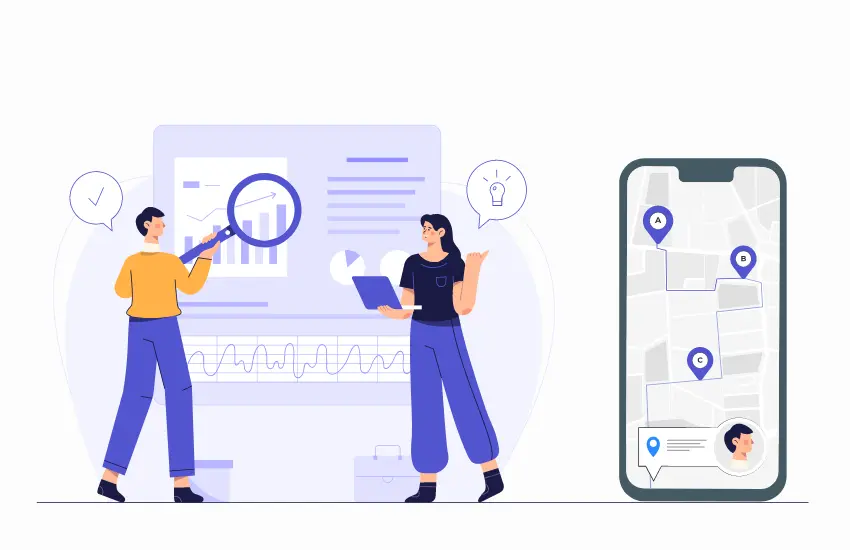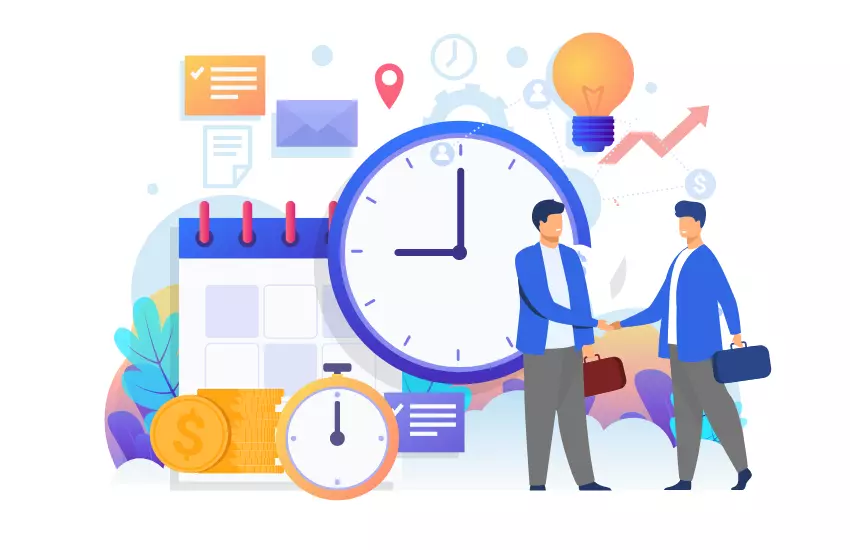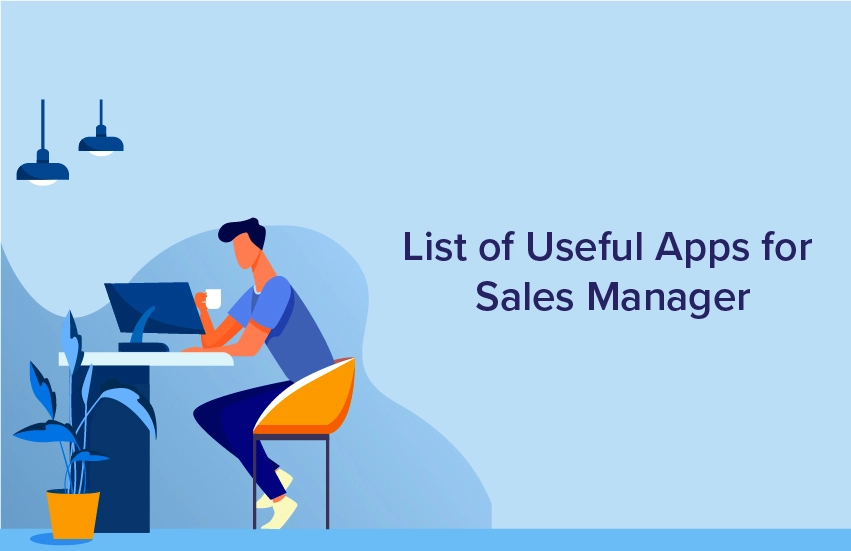
7 Stages Of Field Sales Employee’s Sales Cycle
Table of Contents
One of the most basic processes that each company must follow, to see the continuous success rate in sales, is the sales cycle. A standardized sales cycle with extensively derived sales stages increases efficiency and allows the field sales employees to improve their techniques. It needs to work parallel to customer acquisition strategy, rather than one or the other. This is very important for customer satisfaction and lead conversion.
This sales cycle stages can also improve the overall cohesion of the field sales team by adding a structure to the sales flow. This can lead to improved sales closing rates, increased customer retention, and ultimately, increased sales.
Here are the 7 stages of a field sales employees’ sales cycle explained in detail.
Prospecting for Sales Leads
Prospecting for leads is the first step in the sales cycle. At this stage, field sales employees are probably looking at their target customer’s profile, identifying leads to contact, and considering the best way to reach them. The marketing team can generate leads and forward them to the field sales team. Field sales employees can also get leads through networking, customer referrals, or cold calls. These are potential customers who have shown an interest in your product or who you think might need your services.
To be successful at prospecting, field sales employee need to make sure they have a clear idea of what challenges their product is solving, as well as a well-defined target group and buyer persona. Whichever method they use, the better their lead lists are, the less time they’ll waste talking with people who aren’t actually candidates for the product. Once a lead is qualified and matches the target audience and buyer persona, they can be considered a prospect.
Contacting And Reaching Out To Prospects
After identifying the lead, the next step is to initiate contact. The communication channel the field sales employee chooses will depend on the company or the type of potential customer. In some cases, a phone call is an appropriate way to contact a potential customer, while other times the first point of contact may be an email or a more traditional sales letter.
Make sure to keep the communication short and to the point. Introduce yourself, share your product’s benefits and solutions it provides, and ask them if they’d like to learn more. You’re not giving the full sales pitch at this stage, you’re just reaching out to the prospect in hopes of setting up a more formal meeting. The goal here is simply to make a connection and break the ice with contact with the prospects.
Knowing About The Leads’ Business And Challenges
Qualifying a lead is when a field sales employee does additional research to determine if a lead meets basic criteria for a product or service. This cycle can be started at the contact stage of the sales process, but most of the qualifying usually happens during the first sales meeting or appointment. This will save the field employees’ time and resources as they should pitch to qualified leads only.
Start assessing the prospect’s probability of becoming a customer or whether they will become a qualified sales lead. How does your business or service meet the needs of a particular potential prospect? Know about their budget, timeline, product needs and any other requirements. This helps the field sales employees to narrow down the leads with the highest buying potential who are ultimately more likely to buy from you.
Starting The Sales Pitch, Presenting The Product
Once got a qualified lead, it’s time for the field sales employees to make the sales pitch, which may include a short presentation or demo of their product or service. The purpose of sales pitching is to convince potential prospects that your interests align with theirs. The best pitches are personalized to a specific prospect, using research gathered during prospecting and qualifying.
Field sales employee should be able to show them how their product or service will connect to the prospects existing day-to-day operations and help them see how the product will fit into that framework. During the presentation we should not forget that things like employee’s body language, tone of voice, and appearance all have an impact when pitching to prospects. Be prepared to answer key questions about the unique offers and benefits and the problems the product can solve for them.
Handling And Overcoming Objections
Every field sales employees’ must know how to overcome objections in the sales process. Their job is to make sure that they talk about any concerns at this stage of the process and assuage any concerns the prospects may have about the product. Even some of the most enthusiastic leads will have hesitations and bottlenecks that need to be worked out.
Your prospect will likely take some time to think about your offer, maybe, discuss it with their team or other decision-makers, or compare it to an offer from your competitor. After that, there’ll certainly be some doubts regarding pricing, features, migration, security, or future maintenance. There’s really no way to avoid them, but you can minimize their impact and even use them to your advantage. Give them a clear explanation to eliminate doubt and prove that only your solution can cater to your prospect’s unique needs.
Prospects will likely take some time to think about the offer, possibly discuss it with their team or other decision-makers, or weigh up it to an offer from your competitors. Then there’ll be surely doubts about pricing, features, security, or maintenance.
There’s really no way to avoid them, but you can cut short their impact and even use them to your benefit. Give them a clear explanation to dispel doubts and ensure that only your product solution can meet the prospect’s unique needs and solve their problems.
Closing The Sale For The Day
Closing the sale is either the easiest or the most difficult phase of the sales process. It all depends on how well the field sales employees have done their job in the earlier sales stages. Closing a sale is the final part of the sales process where the leads convert into new customers. Once everything has been discussed, the sales employees should ask the leads if they have any other questions.
They can also ask them if the prospects have any concerns they would like to discuss to ensure that all issues are resolved prior to signing and closing the deal. At this point, you need to make them feel like they’re in good hands. Now is the time to stay in touch and keep your customers confident that they made the right purchasing decision. Part of being a good sale employee is being an effective closer, so you need to master this phase of the sales process.
Following up and Generating Referrals
The sales cycle does not end with the closing of a sales deal. Field sales employees need to work on satisfying the new customers and helping them get the most out of the product to reduce disruption and generate new business.
To prevent the sales process from ending in a single sale, it’s important that they follow up and ensure that their customers are happy. Stay in regular contact to identify cross and up-sell opportunities. You should send a follow-up email or do a phone call to make sure they like the product and get involved and fix any issues if they exist.
Satisfied customers are also a great source of referrals. Customer referrals are the easiest way to turn all the effort and time you spent making your first sale into a second sale. People inherently trust the opinions of those they know and suggest to.
Wrapping Up
Understanding how the sales cycle works is one of the most important phase of becoming a successful field sales employee. This process will not only help the field employees generate more sales revenue and identify improvement opportunities, but it will also pave the way to long-term and healthy customer relationships.
The sales cycle is an essential part of a successful sales process. It structures the field sales employees’ sales activities, highlights drawbacks, and shows how well they have achieved the sales goals. It’s important that the entire field sales team aligns with the company’s sales cycle and uses it as a route to closing sales deals.































